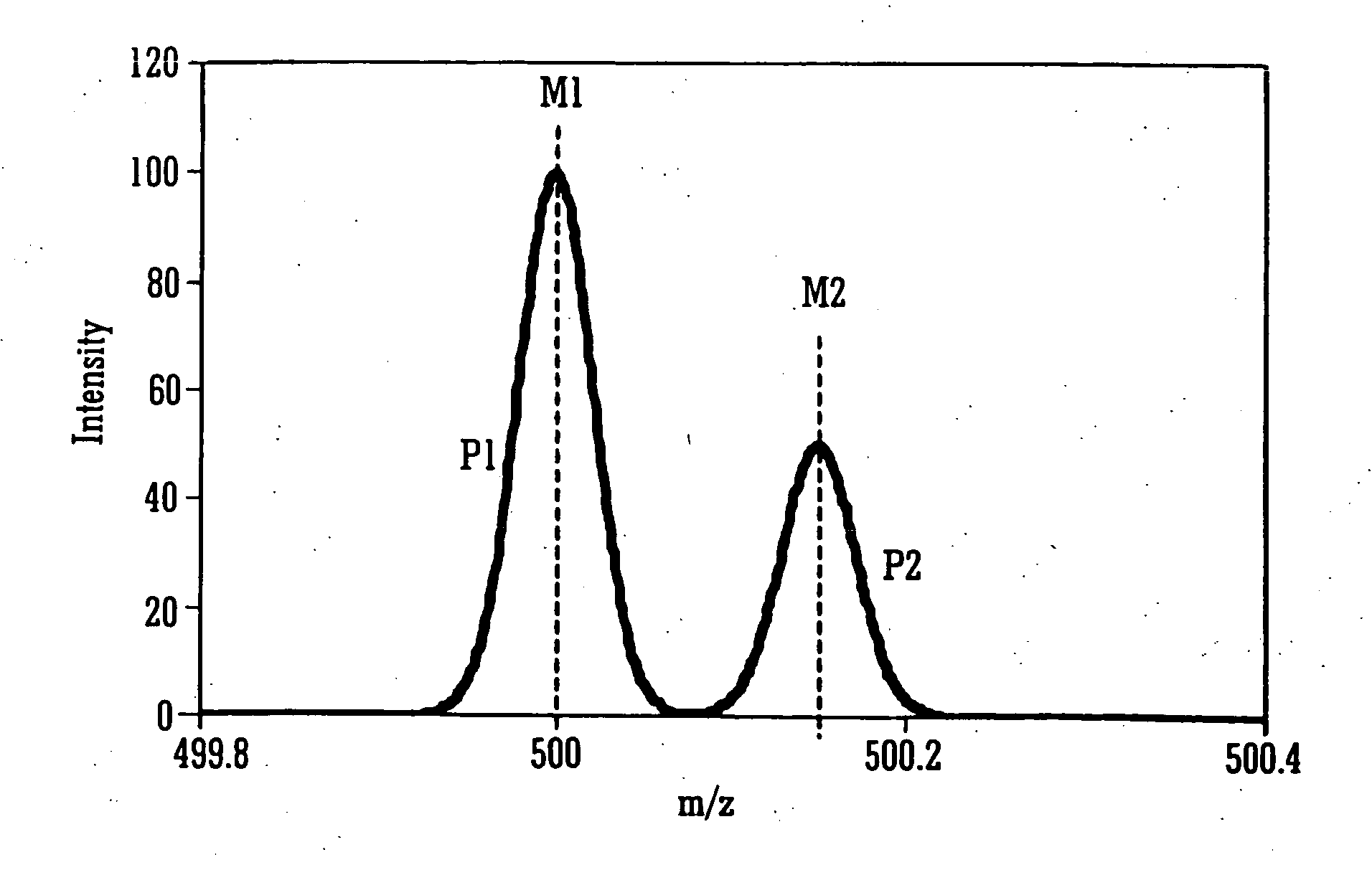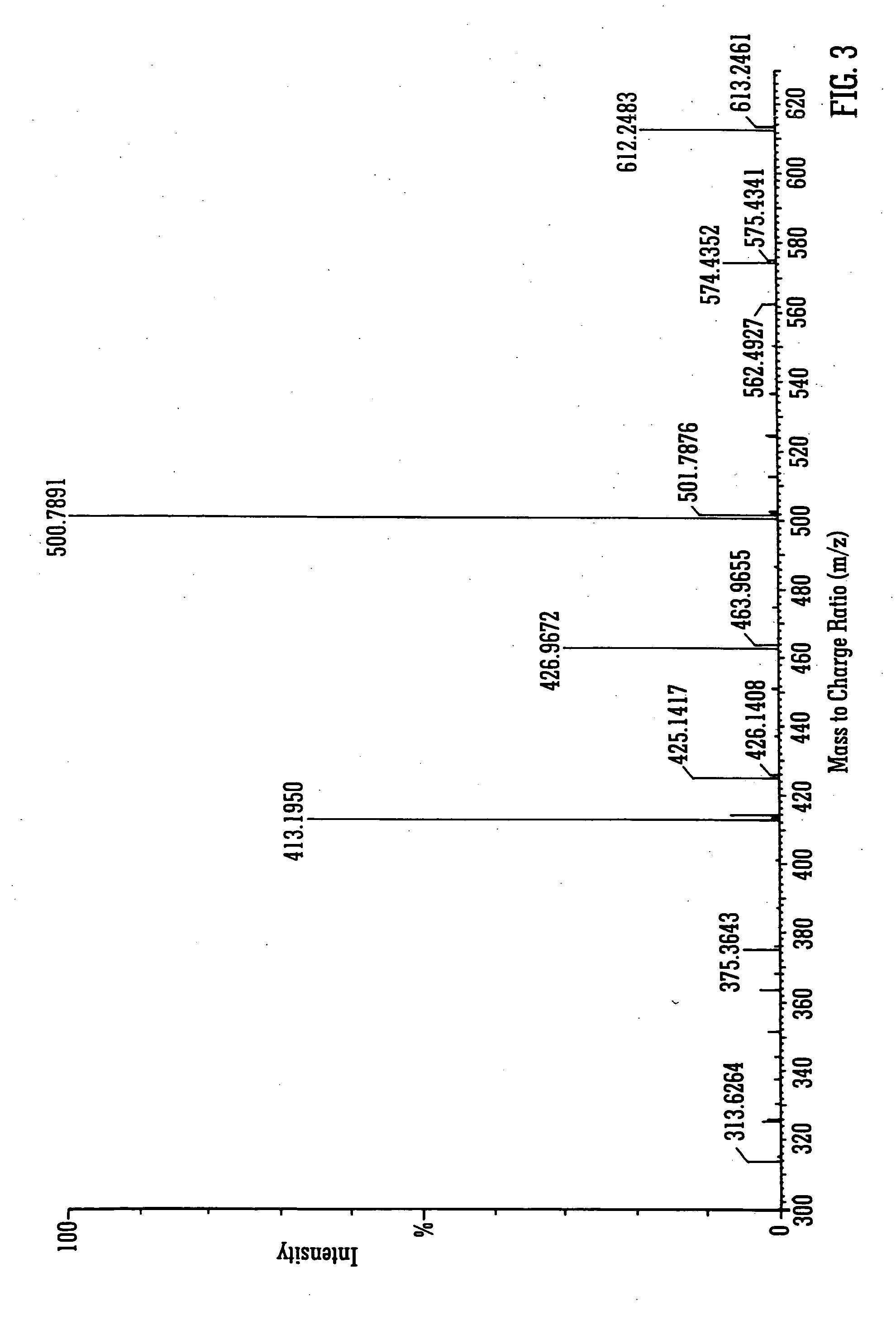Mass spectrometer
a mass spectrometer and mass technology, applied in the field of mass spectrometers, can solve the problems of uncertainty, inability to determine the accuracy of each individual mass to charge ratio measurement relating to an unknown sample,
- Summary
- Abstract
- Description
- Claims
- Application Information
AI Technical Summary
Benefits of technology
Problems solved by technology
Method used
Image
Examples
Embodiment Construction
A preferred embodiment of the present invention will now be described. The preferred embodiment involves arriving at a representative value for the precision and accuracy of an individual mass to charge ratio measurement. In order to do this multiple sources of error are preferably estimated and at least some of these errors are then combined and reported along with each individual mass to charge ratio measurement.
Some of the sources of error involved with an individual mass to charge ratio measurement which are preferably estimated include statistical or random errors such as errors due to ion detection statistics, errors due to insufficient sampling frequency, computational errors (e.g. rounding off errors) and errors recorded during mass calibration.
In some cases data may be sufficiently corrupted that no estimate of mass measurement error may be reliably calculated or reported. These situations include the effects of mass interferences, detector saturation and errors due to i...
PUM
 Login to View More
Login to View More Abstract
Description
Claims
Application Information
 Login to View More
Login to View More - R&D
- Intellectual Property
- Life Sciences
- Materials
- Tech Scout
- Unparalleled Data Quality
- Higher Quality Content
- 60% Fewer Hallucinations
Browse by: Latest US Patents, China's latest patents, Technical Efficacy Thesaurus, Application Domain, Technology Topic, Popular Technical Reports.
© 2025 PatSnap. All rights reserved.Legal|Privacy policy|Modern Slavery Act Transparency Statement|Sitemap|About US| Contact US: help@patsnap.com



